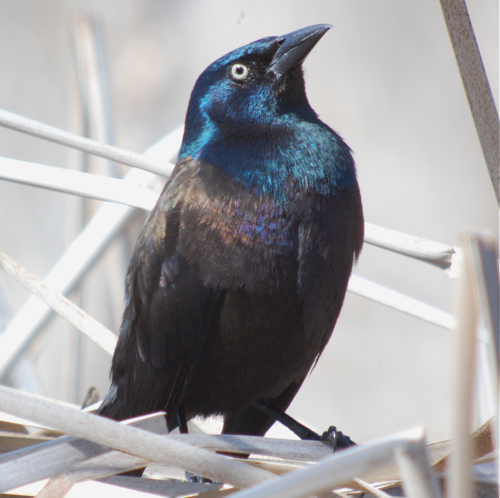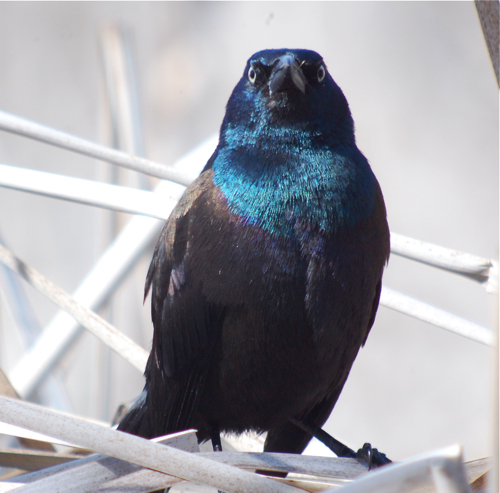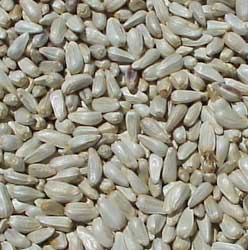 It's that special time of year when migration is in the early stages and any sign of spring is a welcome sign--even the first few small flocks of common grackles like the one above. They really are a pretty bird in the right light. But soon, grackles will be driving people who feed birds a little crazy. They big dark birds fly in with their ravenous appetites and large flock numbers during migration and need the extra fuel to make it to their breeding grounds. Those who have enjoyed chickadees, cardinals and titmice all winter will find the feeders crowded with these aggressive blackbirds. Once insects are out in full force, grackles will go for those, but in the meantime they can be a bit irritating as they crowd out some of the smaller birds. When I worked at the bird feed store, grackles were welcome because that always meant a bump in seed sales because the grackles eat so much.
It's that special time of year when migration is in the early stages and any sign of spring is a welcome sign--even the first few small flocks of common grackles like the one above. They really are a pretty bird in the right light. But soon, grackles will be driving people who feed birds a little crazy. They big dark birds fly in with their ravenous appetites and large flock numbers during migration and need the extra fuel to make it to their breeding grounds. Those who have enjoyed chickadees, cardinals and titmice all winter will find the feeders crowded with these aggressive blackbirds. Once insects are out in full force, grackles will go for those, but in the meantime they can be a bit irritating as they crowd out some of the smaller birds. When I worked at the bird feed store, grackles were welcome because that always meant a bump in seed sales because the grackles eat so much.

You do have some options in dealing with grackles. One is to feed safflower. There's a method to feeding safflower. I've said it before and I'll end up saying it a thousand times but you usually have to introduce your feeder birds to safflower. Sometimes when you have been feeding black oilers all winter and then make the sudden switch to safflower, the usual feeder crowd quits coming. It's like going to your favorite burger joint only to discover that has turned to a Mexican restaurant. It's not that you do not like Mexican food, but when you arrived there, you were expecting to get a hamburger, not a bean burrito. Birds are the same way. They flew in expecting black oil sunflower and find something else. Switching cold turkey could take a few weeks to get regular bird activity back to "normal."

It works best if you can gradually increase the safflower in your mix so that the birds get used to the change. If you start this after you already have grackles coming to the feeders, they will kick out safflower in favor of the seed they prefer.
You can also have one feeder that is all safflower. The grackles may go after the other feeders, but the cardinals, rose-breasted grosbeaks, chickadees, nuthatches, titmice, house finches and mourning doves have a place to go. I usually offer safflower in a tray feeder since cardinals tend to feed more readily in that. There are some good tray feeders in my OpenSky shop (if you purchase from there, 20% of the profits to go kid programming at the American Birding Association).
You can also try weight sensitive feeders with grackles--at least weight sensitive that have a way to adjust the setting. I've use the Squirrel Buster II with fairly good results at keeping bigger birds out--it especially works well if you are having problems with rock pigeons.
